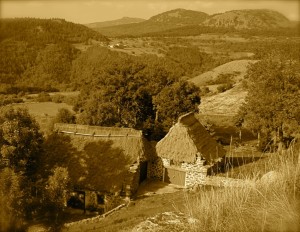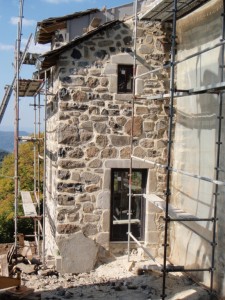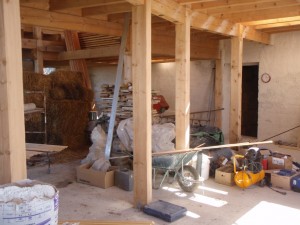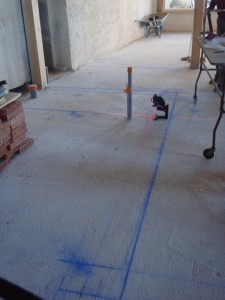Today, the sun set permanently on one of the small thatched-roof cottages of the hamlet; we said goodbye to the last of the elders who was born and lived all her life in the village. She was born here, went to the hamlet school, married one of the best and last thatch-roof specialists, raised her family and lived in one of the smallest but cutest houses in the hamlet.
Young parents would bring their children for her to look after while running into the city or finishing up farm or field work. When we were older and able to wander off by ourselves, we would find refuge at her house to chat, drink a “sirop de grenadine”, suck on a “Vichy pastille” or “Krema candy” and watch a little bit of TV…
Goodbye Angélina, your smile, kindness and warm welcome will stay forever in our memories.
As houses become more insulated and weatherproof, they also become less permeable to air and moisture. This means that both the air inside the house and the moisture generated by the occupants are not easily renewed (air) and eliminated (moisture) as in old drafty houses. There are three main solutions that are generally offered to residents of ‘super-insulated’ houses:
- Manually and diligently air the house by opening and closing windows and doors
- Install venting grids on windows and/or doors (albeit defeats the purpose of installing energy-efficient windows and doors)
- Install a mechanical and automatic venting system or HVAC
Because our house will be rented out and occupied by people who may not be familiar with the functioning of low-energy housing, we opted for installing an automatic venting system.
There are many different venting systems out there and we chose one that is commonly used in passive or even positive housing. It consists of a ventilation unit with heat recovery combined to a ground-to-water heat exchanger (earth tubes with ethyl glycol solution). More information on our system can be found by following the link below
Over the past month and a half, we worked on installing the piping for the ground-to-water heat exchanger. All-in-all, it took us close to 10 days of full work to install 185 meters of tubes at an average of 2 meters below the ground. We had hoped not to find too much rock in the ground but it was wishful thinking. We dug up more than 90 meters of trench of which 35 where almost all rock. In some places we went as deep as 2.6 and in other places we could not go further than 1.2m because of the rock bed.
We installed two loops of 32mm PE-HD (Polyethylene High-Pressure) tubes for a total of 185 meters of hose. We made the trench 0.8m wide in order to lay two tubes in the same trench, 0.6m apart from each other. We used 10 to 15cm of thin black sand, from a near-by quarry, to set the tubes in place and envelop them with consistent and even material before refilling the trench with soil and a ‘few’ rocks.
The pictures below will tell you the rest. Use the “View with Piclens” function to see all pictures and comments.
The two doors leading to the front courtyard are installed and look very nice. These two doors, like the windows are wood-framed with aluminium cladding on the outside.
The doors have a three-point closure system (middle, top an bottom of the door) which is supposed to be more weatherproof and secure than doors with a single latch at the level of the handle.
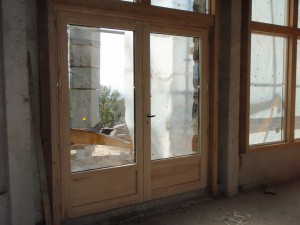
Living room alu-wood door. This is a double door providing a very large opening into the house.left side can also be opened to make a very large opening.
The other doors, 5 more to come (for the upper and lower cellar, kitchen, front entrance and garage), will all be made of solid wood with some wood fiber insulation in between the two layers of planks. We are expecting their delivery and installation by the end of the month.Les deux premières portes de la maison viennent d’être posées et ce sont celles qui mènent sur la cour de devant. Ces deux portes sont de même construction que les fenêtres, en bois-alu et ont un système de fermeture à trois points. La porte se referme toute seule, simplement en la poussant ou en la tirant contre le cadre, il n’y a pas besoin de baisser la poignée.
After a couple of days of cleaning, sorting, recycling, discarding and moving materials, the ground floor was cleared, swept and ready for wall marking.
With the help of a laser, measuring tapes and a ‘cordex’ (thin cord with blue marking powder), we traced the footprint of the peripheral walls and inside walls on the concrete slab.
As we progressed with the marking, we started to see what the various rooms and overall living space might look like once finished.
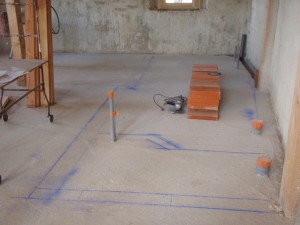
This is where the downstairs toilet and bathroom will be located (Toilet at the front and bathroom behind, bedroom is at the back on the left)
Sadly, we also discovered that the house was 35cm less deep than on the plans…
After checking again and again, there was no doubt, the maçons made a mistake when measuring the house’s footing. The North façade which is supposed to be at a 33 degree angle from the North West façade was placed at a shorter angle thus reducing the overall depth of the house…
Unfortunately, there is not much we can do at this point… Other than visiting the local tax office and requesting a property tax adjustment given the new reduced square footage of the house.
The installation of the slates continues slowly but steadily. According to the contractors, the slates we had bought and recycled from an old farm 6 years ago are very good quality and some of them unusually large. They have just laid down a 1.6m-wide slate which is very rare.
Unfortunately, there will not be enough slates, especially the large ones and we are going to have to purchase more from a different source. Because the North side of the roof is fairly large and particularly long, larger slates are better, especially at the bottom of the roof where there will be a higher volume of water to drain.
The contractors had started to install the slates on the front of the house and recently switched to the back. The back has a North-exposure so starting on this section would avoid having to work on it later when the temperature cools and the winds start again.
